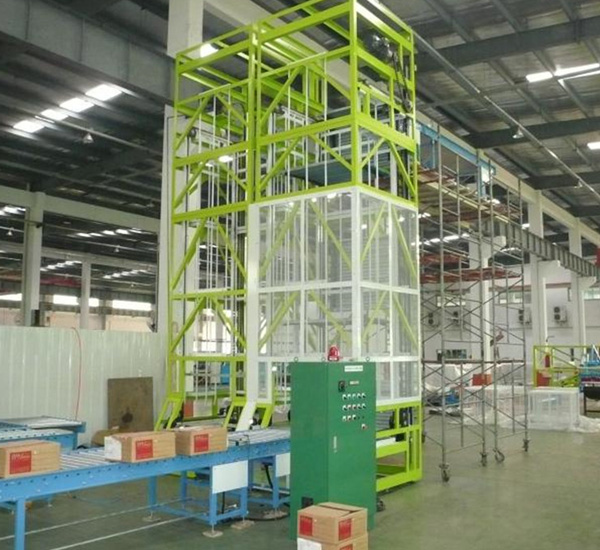Continuous Lifting Machine
- The characteristics of a reciprocating elevator: The reciprocating elevator is driven by a chain and controlled by a frequency conversion speed control motor to lift the car up and down in reciprocating motion. The lifting car is equipped with a transmission mechanism, so that the conveyed material can automatically enter the lifting car of the elevator. The round-trip elevator is characterized by advanced control, reliable performance, and high lift car positioning accuracy. Reciprocating working mode, achieving multi-layer conveying; Multiple conveying options, suitable for different needs; Variable frequency electrical control, stable and reliable operation.
Performance of reciprocating elevators:
1. Reciprocating elevators can be divided into Z-type, C-type, and E-type according to the direction of transportation at the inlet and outlet;
2. Lifting speed:<60m/min (chain driven mode);
3. Lifting stroke: 0-20m;
4. Maximum conveying speed:>15s/piece (depending on the stroke);
5. Load:<4000Kg;
6. Automated operation and configuration of various safety devices to ensure greater safety for personnel and goods;
7. The up and down travel of the elevator car can transport materials, and during one cycle of the elevator car, the materials can flow in both directions simultaneously;
8. The lifting stroke has a large range, but the conveying capacity decreases with the increase of stroke within the same time;
9. A reciprocating elevator utilizes the up and down reciprocating motion of the elevator car to achieve vertical transportation of materials. The elevator car can be equipped with different types of conveying equipment, which can be combined with the inlet and outlet conveying equipment to fully automate the conveying process and improve production efficiency;
10. There are various forms of reciprocating elevators (fixed or mobile), with flexible layout. Materials can enter and exit the elevator from all directions, making it convenient for production equipment layout;
11. Saves space compared to tilting elevators, but the conveying capacity is not as large as tilting elevators
12. Types of conveying materials: packaging boxes, pallets, and pallets
13. Can be designed and manufactured according to customer requirements
Reciprocating elevators are widely used in automation production industries such as household appliances, food, beverages, tobacco, postal services, chemical engineering, mechanical electronics, warehousing and logistics.
































